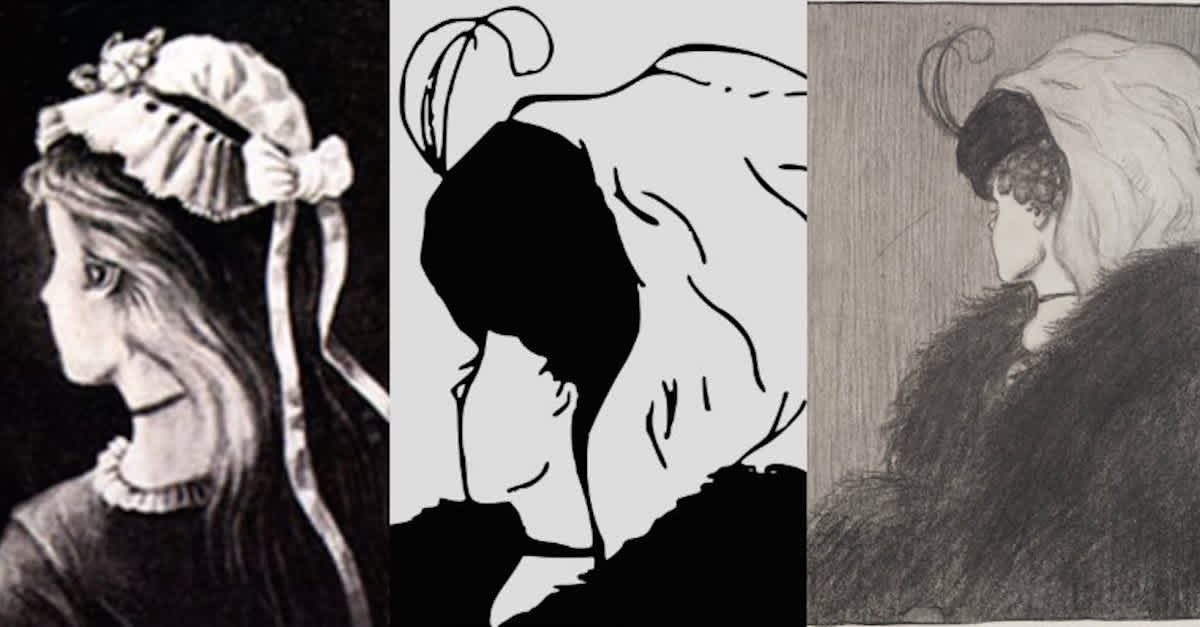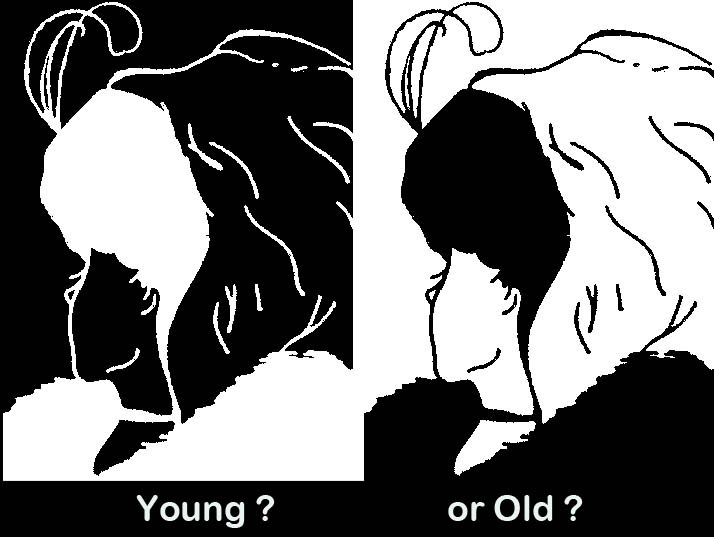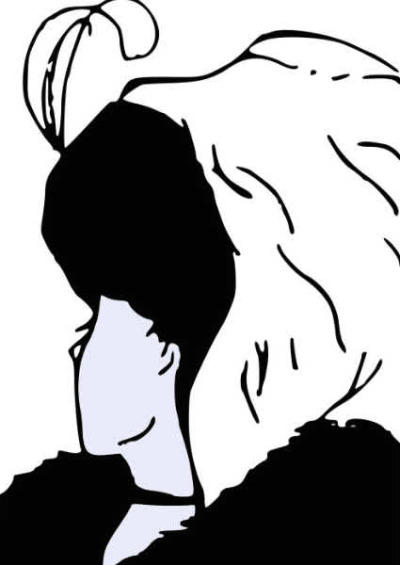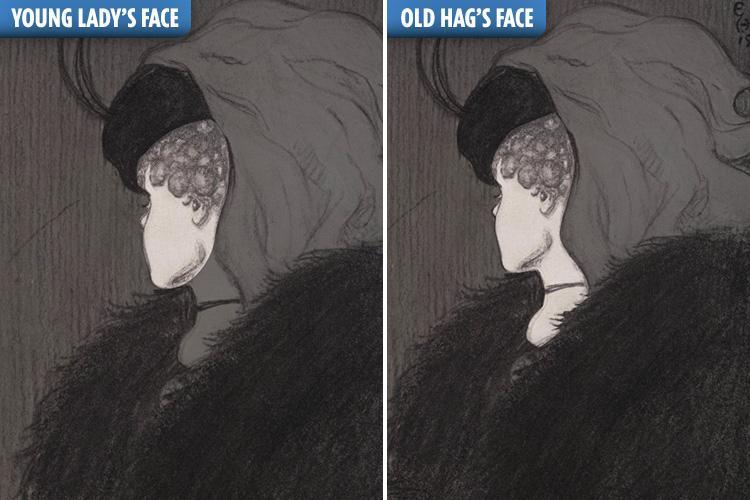🤔 This 1900's Brainteaser 🤔
Still Mesmerizes a Century Later

Which woman did you see first?

It’s incredible how much can change with a tiny shift in perspective. And we don’t just mean it in a soul-searching philosophical way, either!
The human brain has an incredible talent for looking at things from a variety of angles, whether that means reviewing all facets of a complicated problem, or literally looking at an image in more than one way.
In fact, there’s a rich history of creating optical illusions that force us to look at two sides of a situation, and test our brain's ability to adapt.
Of these illusions, a handful are more famous than any of the others, like the notorious and old-fashioned illustration that appears to simultaneously show a duck and a rabbit.
Somehow, even in an age where we are spoiled for entertainment on every tech gadget imaginable, people still get caught in the amazing spell of these images that seem to be two things at once.
Though the rabbit and duck image is a famous example, it’s likely that no image depicts duality quite like the illustration “My Wife and My Mother-In-Law,” by William Ely Hill.
What did you see in this old brainteaser?
The cartoon — published in Puck, a humor magazine, in 1915 — appears differently to different people. Some folks, upon glancing at the drawing, immediately see a young woman. Others instantly know that it’s an illustration of an old woman.

So how could different groups of people be looking at the same image and seeing something so different? Well, as it turns out, both camps are right. The aptly titled illusion depicts two women at the same time.
The clever illustration — which includes several variations, like this German postcard — seems to say that in every young woman, there is the promise of the woman she will grow into, and in every older woman, there is the memory of the young woman she once was. Fascinating, right?

Unfocus your eyes for a moment to readjust, then look closely at the pink area of the picture. If you focus on this area, you should see a young woman, drawn in a quarter-profile. She’s looking away from the viewer over her right shoulder, with a veiled hat flowing behind her.

Now perform the same exercise, but focus on the blue area of the illustration. By looking closely at this area, you should see the other side of the picture, an older woman in profile. Drawn in half-profile, she is stooped, she wears her hair and kerchief differently, and her face is more visible.
Combine the color palettes together, and you can easily see how the two opposing images fit into the same space. The young woman’s chin becomes the older woman’s nose, the older woman’s chin become the younger woman’s neckline, and so on.
Published Feb 22, 2016 - By Rebecca Endicott

It’s a classic optical illusion, but a new university study found age matters when it comes to perception.
People who are younger instantly see the young woman. Older people see the old lady.
That is according to researchers at Flinders University in Australia.
The illusion is called "My Wife and My Mother-in-Law", or even the Boring Figure.
Take a look – what do you see.
OK, so if the research team is right, young people will probably see a young woman looking away.
Older folk will spot the profile of a sad looking granny.
And it seems 30 is generally the cut-off point, said the university which added in its findings that "own-age biases affect subconscious face perception".
For those confused, take a closer look. The young woman's chin doubles as the older woman's nose, and the old woman's chin is also the young woman's chest.
The Australian study was conducted by two psychology professors and they concluded that it has to do with the age of the viewer.
According to the study a younger person will see the younger woman first, while older people will see the older woman first.
They surveyed 393 participants made up of 242 males and 141 females.
The ages ranged from between 18 and 68 with an average of 32.
They were then shown the image for half a second, and were asked the gender and age of the person that they saw.
The pair of boffins were amazed at the answers.
While most participants first saw the younger woman, this could be due to the fact that many of the participants were on the younger side. When the researchers separated the oldest 10 per cent and the youngest 10 per cent of those surveyed, they found that the older set saw the older woman first, and the younger set the young woman.
The point of the study was to determine if "own-age biases affect the initial interpretation of an image at a subconscious level."
People who are younger instantly see the young woman. Older people see the old lady.
That is according to researchers at Flinders University in Australia.
The illusion is called "My Wife and My Mother-in-Law", or even the Boring Figure.
Take a look – what do you see.
OK, so if the research team is right, young people will probably see a young woman looking away.
Older folk will spot the profile of a sad looking granny.
And it seems 30 is generally the cut-off point, said the university which added in its findings that "own-age biases affect subconscious face perception".
For those confused, take a closer look. The young woman's chin doubles as the older woman's nose, and the old woman's chin is also the young woman's chest.
The Australian study was conducted by two psychology professors and they concluded that it has to do with the age of the viewer.
According to the study a younger person will see the younger woman first, while older people will see the older woman first.
They surveyed 393 participants made up of 242 males and 141 females.
The ages ranged from between 18 and 68 with an average of 32.
They were then shown the image for half a second, and were asked the gender and age of the person that they saw.
The pair of boffins were amazed at the answers.
While most participants first saw the younger woman, this could be due to the fact that many of the participants were on the younger side. When the researchers separated the oldest 10 per cent and the youngest 10 per cent of those surveyed, they found that the older set saw the older woman first, and the younger set the young woman.
The point of the study was to determine if "own-age biases affect the initial interpretation of an image at a subconscious level."
Which woman did you see first?


No comments:
Post a Comment